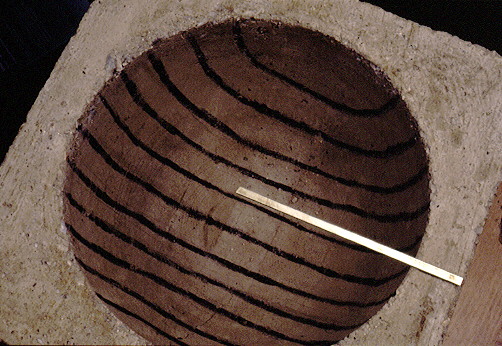
The inventions of the hemispherium and the hemicyclium are
attributed to Berosus (356-323 BCE), a Chaldean priest and
astronomer who brought these types of sundials to Greece. Both
dials use the shape of a concave hemisphere, a shape like the
inside of a bowl that mimics, in reverse, the apparent dome shape
of the sky.
As the sun moved across the sky above, the shadow of
the gnomon or pin would trace the reverse of its course through
the inscriptions on the curve below. The hemispherium was carved
out of a block of stone and its inner surface scored with eleven
lines, dividing the hemisphere and the passage of a shadow
through the day into twelve equal parts. The pin of the
hemispherium cast its shadow from the center of the hemisphere,
such that the noon-day sun would have no shadow at all. The
hemicyclium functioned on the same principle, but part of the
hemisphere was cut away to facilitate the reading of the shadows,
and the pin was placed horizontally at the lip of the dial.